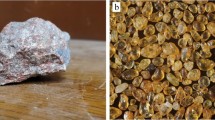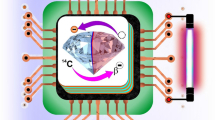Abstract
We have initiated a study of improved methods for implementing dry (AIROX) processing of commercial spent nuclear fuels for recycling back into light-water reactors. In this proliferation-resistant recycle, the spent fuel is converted to a powder, blended with fresh medium-enriched uranium powder, and refabricated into fuel elements. Evaluations of neutronic characteristics show that it will be necessary to remove a substantial portion of the neutronabsorbing fission products in the spent fuel, especially lanthanides and rhodium, in order to achieve efficient utilization of the spent fuel. We have already modeled oxidative vaporization of selected fission products from the powder at 1000 °C. In addition to permanent gases and fission products that are vaporized during pellet sintering, this can remove Tc, Mo, and some Ru and improve the neutronics. A number of approaches are being evaluated for removing lanthanides and rhodium, initially by thermodynamic modeling and review of literature. The lanthanides exist in solid solution with UO2 so separations methods will require conversion to fine powder; rhodium is present as a metallic inclusion in the epsilon phase. Chlorination of finely powdered oxide at 1100–1200 °C would vaporize substantial portions of Nd, Eu, Gd, and Rh. A fraction of the uranium would also vaporize; if significant, it could be recovered for recycle. Magnetic and electrostatic methods were evaluated for separation of lanthanide from spent fuel. They are not likely to be practical. However, static separation techniques may be applicable for removing rhodium in the fine powder metallic inclusions. These technicalconsiderations provide the basis for a suggested experimental program.
Similar content being viewed by others
References
T.E. Carleson, N.A. Chipman, C.M. Wai, “Separation Techniques in Nuclear Waste Management”, CRC Press, 1996.
D.W. Green (editor), “Perry’s Chemical Engineers’ Handbook”, sixth edition, McGraw-Hill Book Company, 1973.
P. Taylor and R.J. McEachern, “Process to remove rare earths from spent nuclear fuel”, Atomic Energy of Canada Limited, US Patent No. 5, 597, 538, January 28, 1997.
H. Kleykamp, “The Chemical State of the Fission Products in Oxide Fuels”, Journal of Nuclear Materials 131 (1985) 221–246.
D.R. Olander, “Fundamental Aspects of Nuclear Reactor Fuel Elements”, TID-2671 l-Pl, prepared for the Division of Reactor Development and Demonstration, Energy Research and Development Administration, published by Technical Information Center, U.S. Department of Energy, 1976.
R.C. Weast, editor, “Handbook of Chemistry and Physics”, page F–140, 51th edition, The Chemical Rubber Co., 18901 Cranwood Parkway, Cleveland, Ohio, 44128.
John A. Dean, editor, “Lange’s Handbook of Chemistry”, pages 3-2 to 3–6, copyright 1979, McGraw-Hill Book Company.
D.R. Lide, editor-in-chief, “CRC Handbook of Chemistry and Physics”, page 12–119, 71 st edition 1990- 1991, The Chemical Rubber Co., 18901 Cranwood Parkway
M. Edenius and B. Forssen, CASMO-3 - A Fuel Assembly Burnup Program, Version 4.4 and Amendment for Version 4.7 (Rev. 2), Studsvik/NFA-89/3, Original Release in November 1989, Rev. 3 Release in June 1993.
O. Hermann and R. Westfall, ORIGEN-S: SCALE System Module to Calculate Fuel Depletion, Actinide Transmutation, Fission Product Buildup and Decay, and Associated Radiation Source Terms, NUREG/CR-0200, Revision 5, Volume 2, Section F7, ORNL/NUREG/CSD-2/V2/R5, Draft User Documentation for Release of SCALE-4.3, Oak Ridge National Laboratory, September 1995.
R. C. Hoyt, L. F. Grantham, R. G. Clark, and P. W. Twitchell, AIROX Dry Reprocessing of Uranium Oxide Fuels, Report ESG-DOE-13276, July 12, 1979.
P. G. Lucuta, R. A. Verrall, Hj. Matzke, and B. J. Palmer, “Microstructural feature of SIMFUEL Simulated high-burnup U02-based nuclear fuel,” J. Nucl. Mater., 178, 48–60 (1991).
P. G. Lucuta, Aceram, Ontario, Canada, personal communication, January 1999.
Author information
Authors and Affiliations
Rights and permissions
About this article
Cite this article
Christian, J., Sterbentz, J., Abbott, D. et al. Concepts for Dry Processing of Spent Nuclear Fuel for Recycling to Light-Water Reactors. MRS Online Proceedings Library 608, 625 (1999). https://doi.org/10.1557/PROC-608-625
Published:
DOI: https://doi.org/10.1557/PROC-608-625




